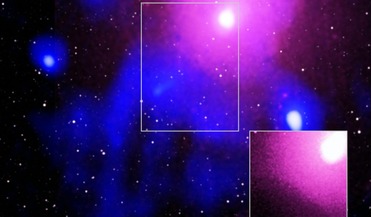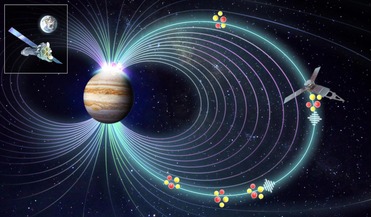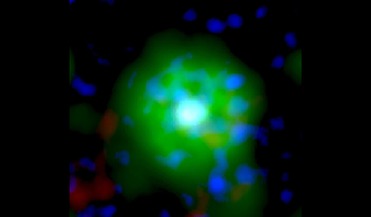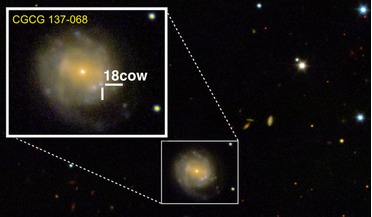 28 February 2020
Record-breaking black hole eruption detected by astronomers
28 February 2020
Record-breaking black hole eruption detected by astronomers
... gas, it released large amounts of matter and energy as powerful jets that astronomers were able to observe with ESA’s XMM-Newton and NASA’s Chandra X-ray space observatories. The record-breaking, gargantuan eruption was also picked up in radio...
 09 July 2021
Astronomers solve 40-year-old mystery of what causes Jupiter’s X-ray auroras
09 July 2021
Astronomers solve 40-year-old mystery of what causes Jupiter’s X-ray auroras
... – a phenomena that had been puzzling scientists for decades. Now thanks to a new analysis of data from ESA’s XMM-Newton telescope and NASA’s Juno spacecraft, a team of researchers have found that ions ‘surfing’ electromagnetic waves in Jupiter...
 11 January 2021
Strange star unlike any seen before, scientists say
11 January 2021
Strange star unlike any seen before, scientists say
... to observe though because the heavier elements sink towards the core. However, when the team pointed ESA’s XMM-Newton space telescope at J005311, it’s chemical composition showed unusual amounts of silicon, sulfur and neon and evidence that...
 30 January 2019
New physics needed to explain early expansion of the Universe
30 January 2019
New physics needed to explain early expansion of the Universe
... solve this cosmic conundrum,” says Risaliti. Help to refine the duo’s models should come in the form of ESA’s Euclid mission which is scheduled for launch in 2022. Euclid’s mission is to map the geometry of the dark Universe...
 January 2020
Collaborating to harness space innovation in healthcare
January 2020
Collaborating to harness space innovation in healthcare
... wafers used previously in ion thrusters for spacecraft, and x-ray optics deployed on star-mapping spacecraft, such as ESA’s XMM Newton mission. This is the one of the biggest satellites ever built in Europe, with some of the most powerful...
 11 January 2019
Birth of a black hole possibly captured for first time
11 January 2019
Birth of a black hole possibly captured for first time
... completely unexpected and it shows that there is a lot of which we don’t completely understand,” says Norbert Schartel, ESA’s XMM-Newton project scientist. “One satellite, one instrument alone, would never be able to understand such a complex object...